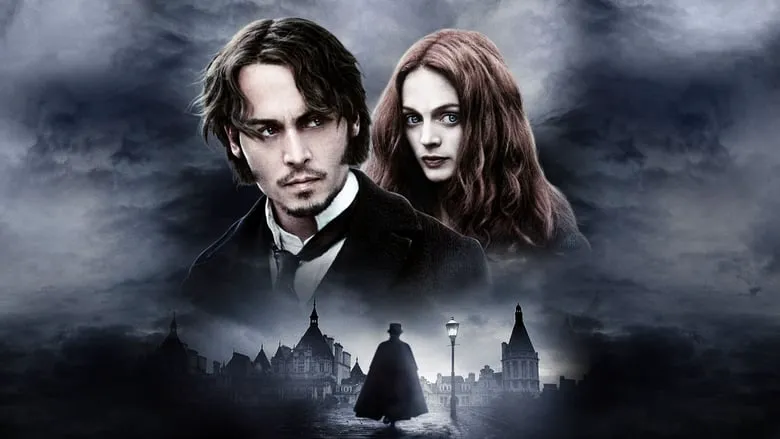From Hell: A Descent into Victorian Darkness
In Albert and Allen Hughes’ film “From Hell,” two noteworthy artistic and historical shifts occur. Firstly, the Hughes brothers, known for their focus on Black narratives, venture into a predominantly white story. Perhaps as a consequence, the white characters are portrayed in a largely unflattering light – as prostitutes, anti-Semitic police officers, syphilitic princes, butcher-like doctors, and Masonic murderers. Corpses with exposed entrails are a recurring motif.

The film shifts the focus from oppressed Black communities to the Jewish population, who were often viewed with suspicion and hostility by Londoners at the time. Irish terrorists, an indifferent royal court, and a corrupt society further contribute to the grim atmosphere. This backdrop of Victorian London in 1888, the hunting ground of Jack the Ripper, is perpetually shrouded in darkness, which defines the film’s overall style. Connoisseurs will appreciate the impressive vertical slice of London’s landscape, from the elevated train lines to the underground tunnels – a five-second shot that reportedly consumed a quarter of the film’s budget. For budgetary reasons, much of the remaining footage was filmed in Prague.
Depp’s Opium-Fueled Detective
Johnny Depp delivers a compelling performance as Inspector Abberline, a character both real and reminiscent of Sherlock Holmes, albeit with an opium addiction that enhances his deductive abilities. Instead of Watson, he has Sergeant Godley, and instead of a pipe, he favors opium. The Hughes brothers considered numerous Hollywood stars for the role, from Sean Connery to Brad Pitt, but ultimately chose Depp, perhaps drawn to the lingering shadow of Constable Ichabod Crane from “Sleepy Hollow.” While they understood that the eccentricities of Burton’s film couldn’t be fully replicated, a subtle comedic undertone remains in Depp’s performance. However, he doesn’t bring many new dimensions to the role.
Visuals and Atmosphere
It becomes apparent that the directors struggle with visual originality. The film plods along, relying heavily on factual accuracy and photographic realism: Inspector Warren’s drooping mustache and the prince’s toothbrush mustache are meticulously recreated. Ironically, the film’s surrealism is borrowed from the Discovery Channel documentary “Jack The Ripper” (released as “The Mystery of Jack the Ripper”). The somber silhouette of Big Ben, the swirling fog illuminated by gaslight, the scavenging rats on the cobblestones, the sinister figure in a bowler hat, and even the blood-red clouds – all were present in the documentary. This could be considered plagiarism or simply a lack of imaginative flair, relying on well-worn clichés. If the visual aspect is a strength of the film, it’s thanks to cinematographer Peter Deming, who honed his skills with David Lynch. Unconstrained by the plot, he employs a range of techniques from the Chaplin era, from grainy film to slow-motion shots. The oppressive atmosphere is largely due to composer Trevor Jones, who crafted a symphony of string drones, pub chatter, cab clatter, and mournful church bells.

Casting and Romance
The most significant misstep is Heather Graham’s portrayal of Mary Kelly. A mediocre actress to begin with, she doesn’t fit the role of a grimy East End prostitute. Even when selling herself for a crust of bread, she seems to aspire to be a Hollywood star with flawless makeup. Furthermore, the filmmakers deviate from historical accuracy by having the clairvoyant Abberline fall in love with the future victim of Jack the Ripper. The romance feels rushed and unconvincing: a mere glance, and it’s time to mourn over a dismembered corpse. There’s no suspense.
Masonic Conspiracy
The most sinister element of the film is the Masonic conspiracy. Five-pointed Masonic stars intertwine with six-pointed Stars of David, sacrificial candles flicker, rituals are performed, and the threads of the conspiracy reach the highest levels of government. The terrifying Jack, cloaked with a blood-red lining, embarks on a path of vengeance: the prostitutes have led to the prince contracting syphilis.